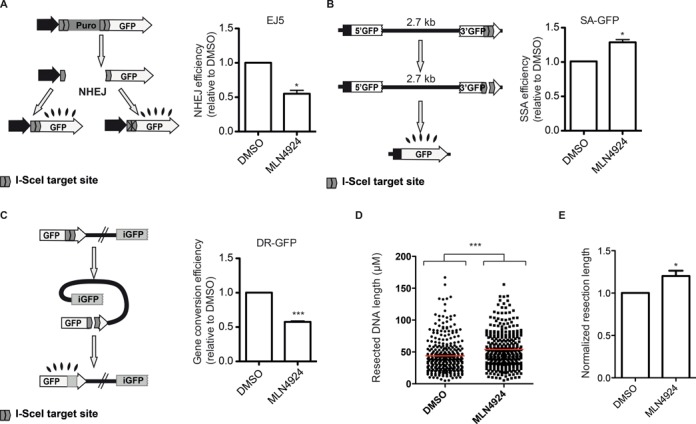Figure 5.

Effect of inhibition of protein neddylation in different DSB repair pathways. (A) In the EJ5 reporter (left), I-SceI-induced DSB can be repaired by NHEJ recreating an active GFP gene, containing or not a functional I-SceI target site. The percentage of green cells was calculated as described in the Materials and Methods section in cells pretreated with MLN4924 or DMSO. This percentage was normalized with the DMSO-treated cells value and plotted. Bars represent the average and standard deviation of three independent experiments. (B) Same as (A), but using the SA-GFP. Such a reporter is formed by two truncated copies of the GFP that, upon SSA, can restore an active GFP gene with the deletion of one of the repeats and the intervening region. Other details are the same as in (A). (C) The DR-GFP reporter is formed by two non-functional copies of the GFP. Gene conversion induced by an I-SceI-mediated DSB restores an active GFP gene. The efficiency of gene conversion was calculated as described in (A) for NHEJ. (D) Single molecule analysis of resection tracks (SMART) of cells treated with DMSO or MLN4924. The length of individual fibers is shown as a scatter plot. A Mann–Whitney test was performed to analyze the statistical difference of both populations. (E) The median length of resected DNA was normalized to DMSO. The average of four independent experiments is shown.
